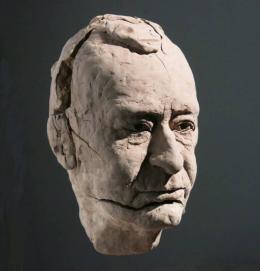Cancer survivor advocates healing art

In 2004, Yaron Butterfield was packing his bags for a dream trip to India with his roommate when a few days before flying out, he suffered a seizure.
Luckily he was at his parent’s home when he collapsed and was able to get to a hospital immediately.
But the news wasn’t as fortunate – Butterfield was diagnosed with glioblastoma multiforme (GBM), the most common—and most aggressive—type of malignant brain tumour.
A fighter in every sense of the word, Butterfield, a former soldier in the Israeli Army, recovered by 2006 and has since been cancer-free.
As much as his strength of spirit and relative youth at the time of diagnosis helped him overcome the cancer, art played an equally crucial role.
“Doing art can be so beneficial for anybody, but I find it has an added degree of efficacy in healing cancer patients, especially right after treatment,” Butterfield said in The Georgia Straight.
“It’s kind of hard to find where you stand and what your abilities are, and sometimes it’s hard to express yourself, depending on where you had the cancer and the treatment,” he said of the months that followed his chemotherapy and radiation.
In light of Brain Tumour Awareness Month, the Patient and Family Advisory Council of the B.C. Cancer Agency has teamed up with a local art gallery to showcase the art of those affected by brain cancer.
Co-leading the event is co-chair of the council and Butterfield, now a fulltime cancer researcher with the BC Genome Centre.
Butterfield pioneered the agency’s art therapy program, which offers cancer patients an opportunity to express their artistic side with other patients and a therapist. He’s found it to be a very positive experience for participants.
“I do try and make the point that I think art is good for anyone. If someone is going through trauma, whether it’s cancer, the loss of a loved one, or a different disease, art is very calming and a positive thing to experience,” he said.
Butterfield also said that making art gave him a sense of accomplishment, “because you’re putting something out there rather than just having thoughts swirling around in your head”—something that he had struggled with while away from work during treatment.
The exhibition will be on display at Visual Space Gallery (3352 Dunbar Street) from October 7 – 13. For more information go to www.visualspace.ca.









